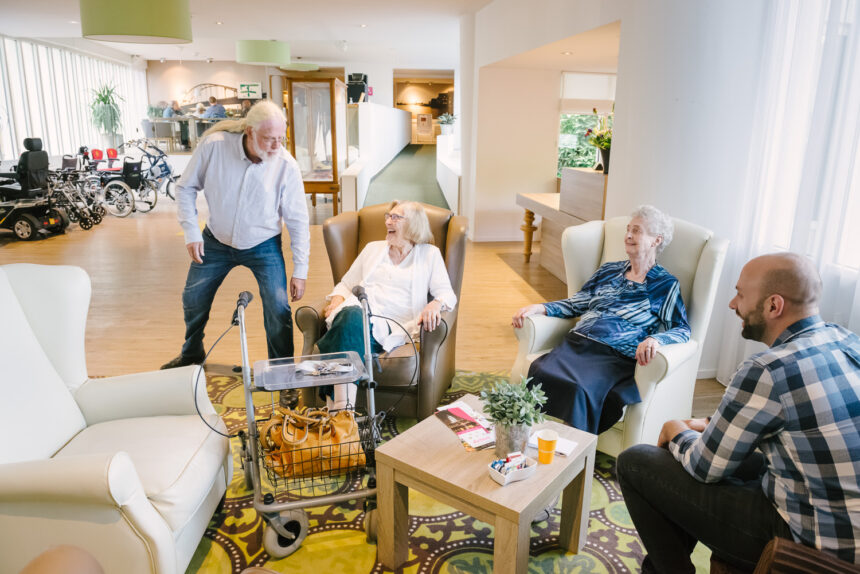Retirement homes are more than just a place to live—they are thoughtfully designed spaces that prioritize comfort, wellness, and a sense of community for seniors. With a focus on meeting both physical and emotional needs, modern retirement homes incorporate innovative features, personalized services, and engaging environments to create an exceptional living experience.
This article explores the unique aspects of retirement homes, highlighting how their design and philosophy contribute to the well-being and satisfaction of their residents.
Comfort as a Cornerstone of Retirement Living
Creating a comfortable environment is at the heart of every well-designed retirement home.
1. Spacious Living Arrangements
- Retirement homes offer a range of accommodations, from private studios to larger apartments, catering to different preferences and needs.
- Thoughtful layouts ensure ease of movement and accessibility, even for residents with mobility challenges.
2. Personalized Interiors
- Residents are encouraged to personalize their living spaces with furniture, artwork, and décor that reflect their tastes, making their space feel like home.
3. Cozy Communal Areas
- Lounges, libraries, and dining halls are designed to be inviting and comfortable, fostering relaxation and social interaction.
Wellness-Focused Amenities and Services
Promoting physical, mental, and emotional wellness is a defining feature of modern retirement homes.
1. Health and Fitness Facilities
- On-site gyms, yoga studios, and swimming pools encourage residents to stay active and maintain their health.
- Group exercise classes and personal training sessions cater to varying fitness levels.
2. Therapeutic Spaces
- Spa rooms, meditation areas, and sensory gardens provide spaces for relaxation and stress relief.
3. Comprehensive Healthcare Access
- Retirement homes often include on-site clinics, wellness programs, and visiting healthcare professionals to address residents’ medical needs.
4. Nutritional Support
- Balanced, chef-prepared meals accommodate dietary preferences and restrictions, ensuring residents receive proper nutrition.
Safety and Accessibility in Design
Safety is a top priority in retirement homes, with every aspect of design tailored to minimize risks and enhance independence.
1. Accessible Features
- Step-free entrances, wide doorways, and elevators make all areas of the community easily navigable.
- Bathrooms are equipped with grab bars, non-slip flooring, and walk-in showers for added safety.
2. Emergency Systems
- Emergency call buttons, intercoms, and 24/7 staffing provide peace of mind for residents and their families.
3. Lighting and Visibility
- Well-lit corridors, motion-sensor lighting, and large windows ensure visibility and reduce the risk of falls.
Creating a Vibrant Social Environment
Retirement homes are designed to nurture social connections and provide opportunities for meaningful engagement.
1. Shared Activity Spaces
- Spaces like game rooms, art studios, and community gardens encourage residents to explore hobbies and interact with peers.
2. Social Events and Clubs
- A wide range of activities, from book clubs to movie nights, ensures residents can find something they enjoy.
- Special events, such as themed parties or live performances, add excitement to the community calendar.
3. Outdoor Spaces
- Walking trails, patios, and landscaped gardens offer peaceful settings for socializing and recreation.
Technology Integration for Enhanced Living
Modern retirement homes leverage technology to improve convenience, safety, and engagement for residents.
1. Smart Home Features
- Voice-activated devices and automated systems make managing daily tasks simple and intuitive.
2. Virtual Connections
- High-speed internet and community apps keep residents connected with family and friends, even from a distance.
3. Activity Tracking
- Wearable devices and wellness apps help residents monitor their health and stay active.
4. Event Notifications
- Digital calendars and reminders ensure residents never miss out on activities or appointments.
Eco-Friendly and Sustainable Design
Many retirement homes are adopting sustainable practices to create eco-friendly living environments.
1. Energy Efficiency
- Solar panels, LED lighting, and energy-efficient appliances reduce environmental impact.
2. Water Conservation
- Low-flow fixtures, rainwater harvesting systems, and drought-resistant landscaping promote responsible water use.
3. Green Building Materials
- Using sustainable materials for construction and décor aligns with modern environmental standards.
4. Recycling Programs
- Encouraging residents to participate in recycling initiatives fosters a sense of responsibility toward the environment.
The Role of Staff in Enhancing Comfort and Wellness
The staff in retirement homes play a vital role in creating a supportive and welcoming atmosphere.
1. Personalized Care
- Staff members take the time to understand each resident’s preferences and needs, tailoring their support accordingly.
2. Engagement and Interaction
- By facilitating activities and social events, staff help residents form connections and stay engaged.
3. Ongoing Training
- Continuous professional development ensures staff are equipped to provide the highest quality care and support.
How Retirement Homes Support Families
A well-designed retirement home benefits not only its residents but also their families.
1. Peace of Mind
- Families can feel confident knowing their loved ones are in a safe and caring environment.
2. Inclusive Visits
- Many retirement homes offer family-friendly spaces and events, encouraging relatives to remain actively involved in their loved ones’ lives.
3. Open Communication
- Regular updates and open communication channels keep families informed and reassured.
Harrison Landing prioritizes the well-being and comfort of both residents and their families, fostering an environment that feels like home.
Choosing the Right Retirement Home
When evaluating retirement homes, consider the following factors to ensure the best fit:
1. Living Spaces
- Tour the available units to assess their size, layout, and personalization options.
2. Amenities and Programs
- Look for facilities and activities that align with the resident’s interests and needs.
3. Staff and Community Atmosphere
- Interact with staff and observe the dynamics among residents to gauge the overall vibe of the community.
Final Thoughts
Retirement homes are uniquely designed to meet the evolving needs of seniors, combining comfort, wellness, and safety with opportunities for engagement and connection. These thoughtfully crafted environments empower residents to enjoy their golden years in a supportive and vibrant setting.
With trusted providers like Harrison Communities, seniors and their families can find the perfect place to call home—where well-being and happiness are always a priority.


